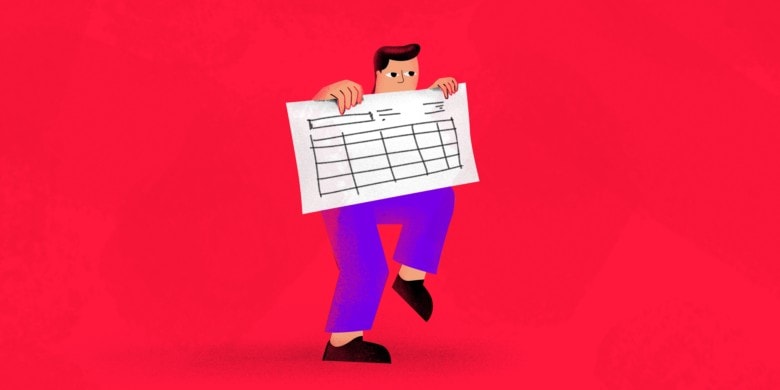Being overwhelmed at work can feel like a marathon where the finish line keeps moving further and further away. Many of us know the sensation all too well: the endless to-do lists, the constant barrage of emails, and the ever-looming deadlines that seem to grow instead of shrink.
The cost? This overwhelming feeling can wreak havoc on our performance, dampen our well-being, and leave us feeling utterly defeated.
But what if there was a way to tame the chaos? Effective organizational strategies can transform our work environment from a cluttered battlefield into a well-oiled machine.
Let’s dive into the art of getting organized at work and reclaim control over our professional lives.
Boost your team’s efficiency with Hubstaff's productivity tools
What does workplace overwhelm look like?
We’ve all had those days when the tasks on your to-do list seem overwhelming and never-ending. Feeling overwhelmed at work isn’t just about having too much on your plate. It’s a complex mix of emotions and thoughts that can impact your well-being and productivity.
A staggering 55% of employees say they experience overwhelming feelings for up to 25% of their week.

But how can you tell when your drive for productivity and strong work ethic has crossed the line into overwhelming territory? Here are some common signs that you might be overwhelmed at work.
Signs of being overwhelmed at work
- Persistent worry and stress about tasks, meetings, and deadlines.
- Continuously thinking about work (even during evenings and weekends).
- Feeling the need to work extra hours and believing it’s the only way to catch up.
- Experiencing a sense of dread about going to work each day.
- Feeling pessimistic about the future and doubting your ability to complete tasks.
- Feeling physically, mentally, or emotionally drained.
- Feeling isolated and believing that no one can help you.
If this sounds familiar, don’t worry! At the risk of being cliche here, admitting you have a problem is the first step.
In all seriousness, it is essential to take proactive measures to manage your workload, seek support, and implement strategies to improve your work-life balance.
The impact of an overwhelmed workforce
Let’s face it: feeling overwhelmed at work isn’t just a personal issue. It has ripple effects that can impact the entire organization. An individual’s mental health and well-being are the top priority here. But, as a note for those high achievers out there: overworking yourself until you burnout actually makes you less productive.
Here’s a closer look at how an overwhelmed workforce can affect everyone involved.
1. Decreased productivity
When employees are drowning in their to-do list, their focus and ability to get things done takes a nosedive. Instead of checking off items on their to-do lists, they may find themselves stuck in a cycle of inefficiency. This leads to missed deadlines and a noticeable drop in productivity, making it hard for the team to hit its goals.

2. Lower quality of work
Rushing through urgent tasks to keep up can result in sloppy work. Attention to detail goes out the window, and mistakes start piling up. This quality dip affects individual performance and can tarnish the company’s reputation if clients or customers are on the receiving end of these errors.
3. Increased absenteeism and turnover
Stress and overwhelm can drive employees to take more sick days to recover from burnout or avoid the workplace altogether. In fact, sick leave is at a 10-year high, with stress being one of the leading contributing
When stress persists, employees might start looking for a way out, leading to higher turnover rates. Replacing employees is costly and time-consuming, not to mention the loss of irreplaceable experience and knowledge.

4. Negative impact on health
The effects of stress don’t stop the second they walk out the office door. Overwhelmed employees often face mental health challenges like anxiety and depression, as well as physical issues like insomnia and heart problems. This diminishes their quality of life and increases health care costs for the company.
5. Reduced engagement and morale
Constantly stressed employees may lose their enthusiasm and start disengaging from their roles. This drop in morale can spread like wildfire, leading to a less vibrant and innovative workplace. An overwhelmed workforce is terrible for both the employees and the business. It’s crucial to recognize the signs of overwhelm and take proactive steps to address them.
Encouraging a healthy work-life balance, providing stress management resources, and fostering a supportive work environment can make a difference. By taking care of the team, organizations can boost productivity, improve the quality of work, and create a happier, healthier workplace for everyone.
How to get organized when overwhelmed at work
To put it mildly, feeling overwhelmed at work can be challenging. When you’re struggling to stay afloat, productivity and organization are often the furthest thing from your mind. Unfortunately, dear readers, organization, and prioritization (though time-consuming) are your biggest ally in this fight.
Luckily, we’re here to help you tackle the first and hardest step: knowing where to start. So, take a deep breath and follow along with us.
1. Understand the underlying causes
First, step back and identify what’s causing you to feel overwhelmed. Is it the sheer volume of important tasks, unclear priorities, or perhaps something external like personal commitments or health concerns?
Understanding the root cause can help you address the feeling more effectively. Take a few minutes to reflect and jot down any factors contributing to your stress. Sometimes, simply recognizing the source of your overwhelm can make it feel more manageable.
2. Assess your workload
Once you’ve identified the underlying causes, it’s time to examine your workload closely. Here are some techniques to help you assess and prioritize effectively:
- List everything. Write down all your tasks, big and small. Create a system for highlighting urgent or overdue tasks. This is the first step in improving your organizational skills. It might seem simple, but there’s a reason most productivity methods start with this step. Seeing everything in one place can help you understand what needs to be done.
- Break down projects. Large projects and digital clutter can be daunting. Break them into smaller, more manageable tasks. This not only work less intimidating but it also helps you build momentum as you progress through each step. Try using task management tools to help you break your work into more manageable Sprints.
- Delegate when possible. If you have team members or colleagues who can help, don’t hesitate to delegate and assign tasks to them. Sharing the workload can significantly reduce your stress levels. If you’re a manager, consider written policies and tools to help balance workloads.

Understanding what’s causing you to feel overwhelmed and systematically organizing your tasks can create a more manageable and productive work environment. Remember, organization is an investment in your efficiency and well-being — even if it feels like one more item on the to-do list in that moment.
3. Take action
Now that you have everything sorted, it’s time to make some moves. Again, we won’t make you go it alone here.
At Hubstaff, we’re obsessed with productivity and strategically making the most of our time. So, we’ve got tons of guides and tips to help you manage your time like a pro. Below, we’ll list a few of our favorite ways to manage your time and prioritize tasks.
Task prioritization strategies
- Eisenhower Matrix. Try sorting your tasks into four categories: urgent and important, important but not urgent, urgent but not necessary, and neither urgent nor essential. This way, you can focus on what truly matters for your long-term goals while still handling the immediate demands.

- Pareto Principle (80/20 Rule). The 80/20 rule suggests that about 80% of results come from 20% of efforts. Focus on identifying and prioritizing the tasks that will give you the most significant outcomes with the least amount of effort to boost productivity.
- Eat the Frog. Brian Tracy’s method advises you to tackle the most challenging or unpleasant task first thing in the morning. Once you get the most difficult tasks out of the way, the rest of your day will feel much more manageable.
Time management techniques
- Pomodoro Technique. Break your workday into focused intervals, usually 25 minutes, followed by a 5-minute break. This method helps you concentrate and maintain productivity by giving you short breaks to recharge.
- Time Blocking. Allocate specific time blocks for different daily tasks or activities. Time management skills like Time Blocking help you create a structured schedule and prevent complex tasks from expanding to fill all your available time.
- Deep Work. Group individual tasks, like responding to emails or making phone calls, and handle them during a dedicated time without interruptions. This helps you stay focused and efficient rather than bopping around multiple projects or from one task to another.
Now that you know what you need to do and have the strategies to prioritize your work, it’s time to get cracking — but not alone.
4. Find technology and tools to help manage overwhelm
Our final step is perhaps the most important: mastering the art of optimizing your time with technology.
Staying organized and managing essential tasks can be a game-changer in your work life, and technology makes it easier than ever. Here are some tips on how to use tools effectively:
- Try a project management tool. Apps like Trello and Asana can help you track your tasks, set deadlines, and collaborate with your team. They also allow you to organize and visualize your workload in the way that suits you best and helps you prioritize tasks more effectively.
- Embrace time tracking. Tools like Hubstaff help you improve time management, see how much time you spend on tasks, and see real-time productivity patterns. Using our Insights add-on, managers can help their team fight burnout by understanding who is overworked and stepping in before fatigue sets in.
- Set up digital calendars. Google Calendar or Outlook can be your best friends when it comes to scheduling. Block out time for specific tasks, set reminders, and ensure you have a clear view of your commitments. It’s also a great way to stay on top of due dates by setting reminders for upcoming deadlines.
- Automate repetitive tasks. Use automation tools like Zapier to connect your apps and automate repetitive tasks. Then, embrace using AI tools like ChatGPT to do your busy work. This can save you a lot of time and reduce the chance of errors.
By incorporating the right productivity tools into your daily routine, you can stay organized, manage tasks more efficiently, and ultimately boost your productivity. Our crystal ball is telling us you will feel less overwhelmed soon.
Most popular
The Critical Role of Employee Monitoring and Workplace Security
Why do we need employee monitoring and workplace security? Companies had to adapt fast when the world shifted to remote work...
15 Ways to Use AI in the Workforce
Whether through AI-powered project management, strategic planning, or simply automating simple admin work, we’ve seen a dramatic...
The AI Productivity Panel: Lessons From Leaders on What’s Working (and What’s Not)
When I moderated this AI productivity panel, I expected a solid conversation. What I didn’t expect was the flood of real-world i...
Employee Performance Dashboards: Templates, Tools, and Best Practices
Keeping track of how your team’s really doing can be tricky. Spreadsheets pile up, one-on-ones only tell part of the story, and...



![How to Use Time Blocking to Make 2024 Your Most Productive Year Ever [Free Template]](https://hubstaff.com/blog/wp-content/uploads/2018/12/time-blocking@2x-780x390.png)
